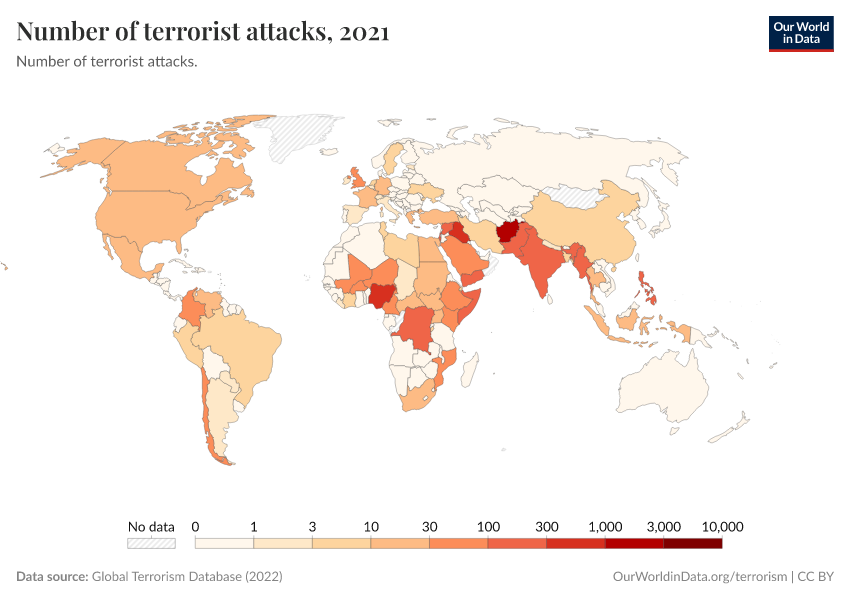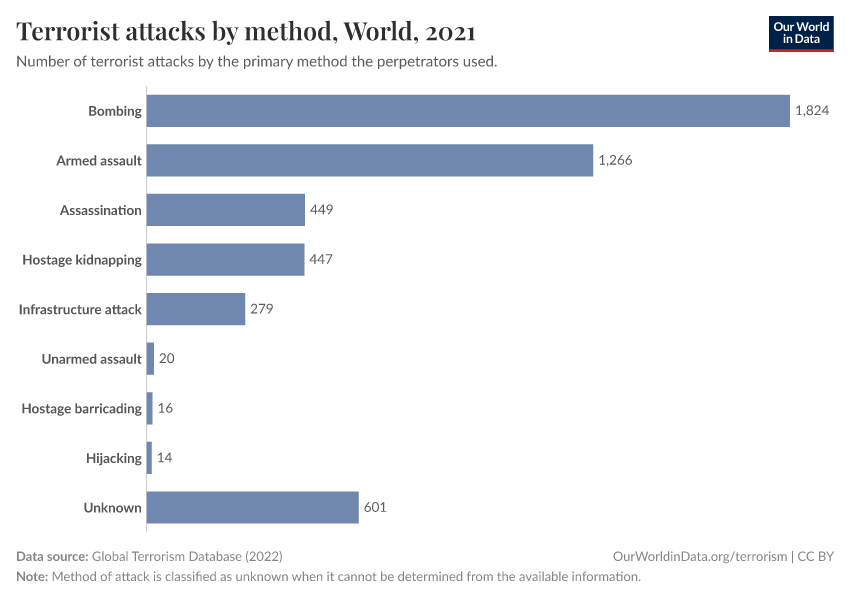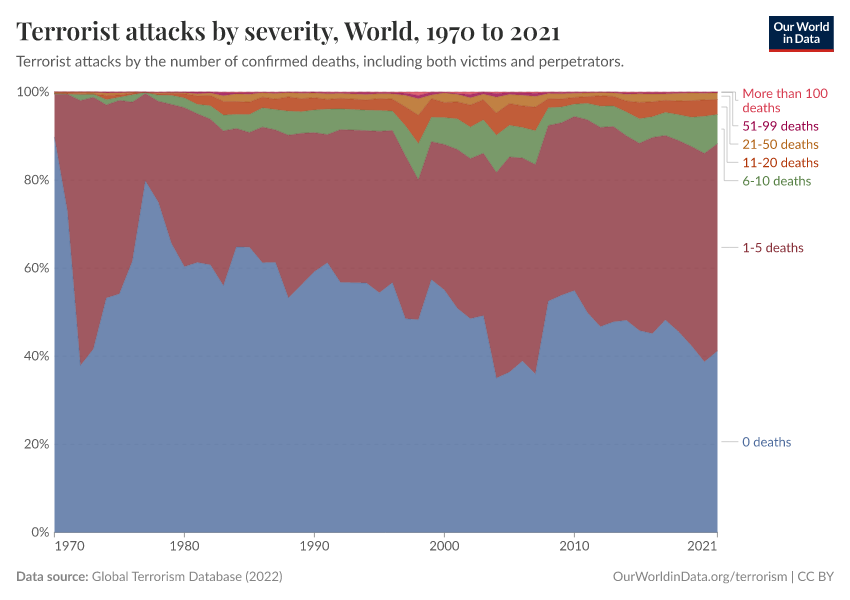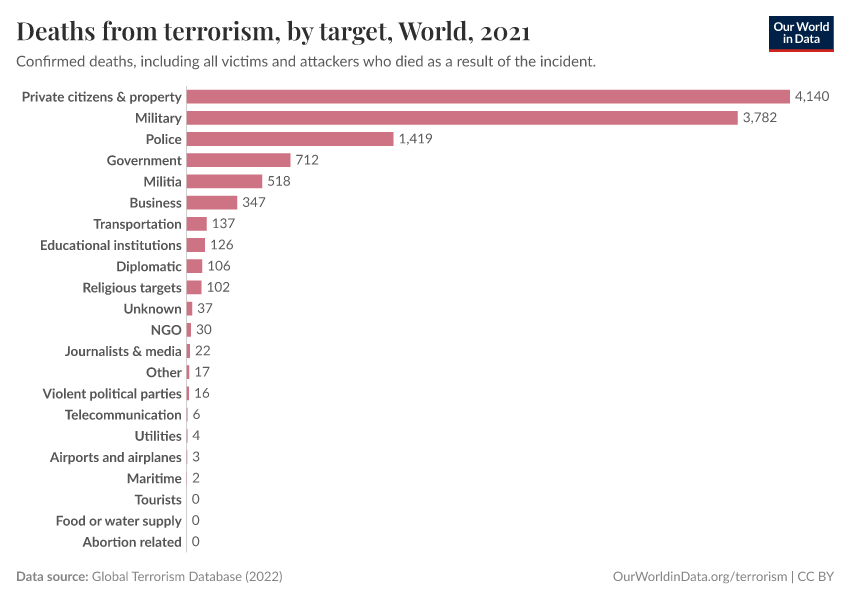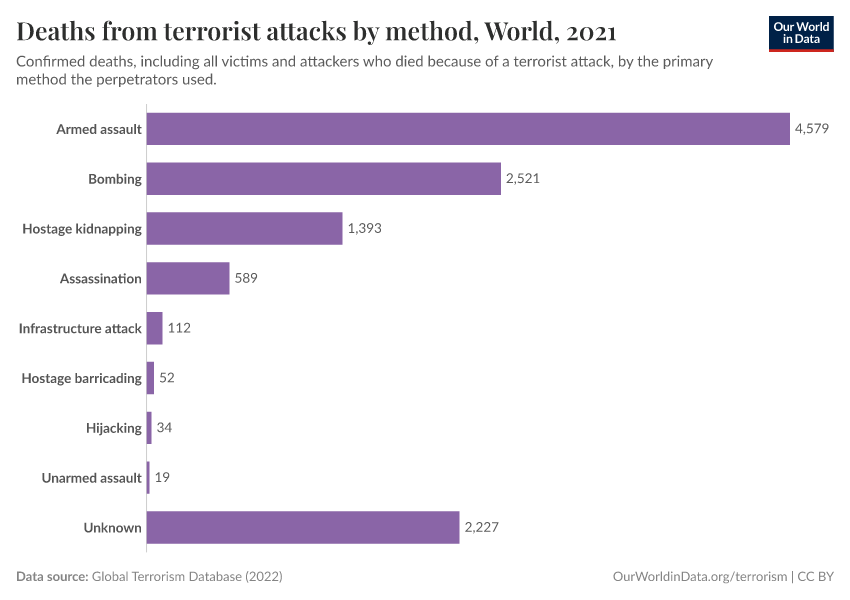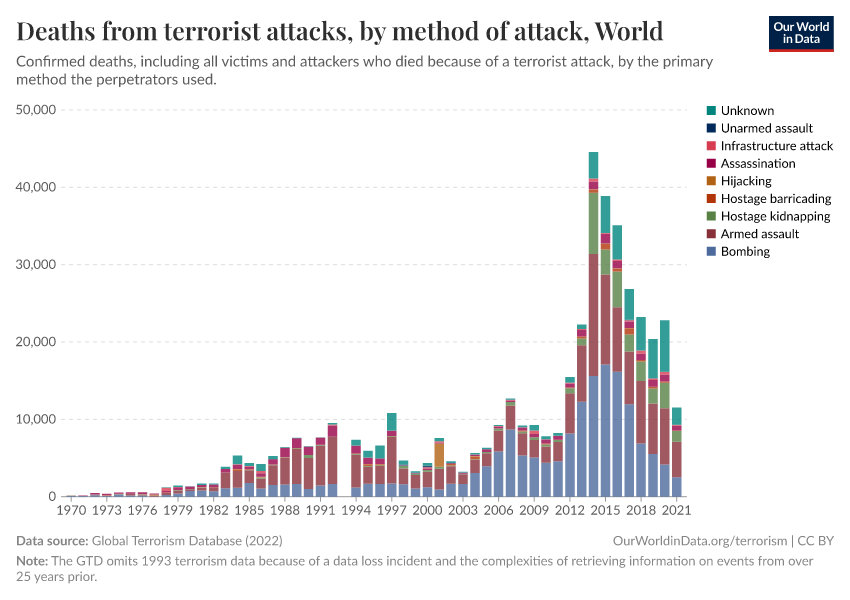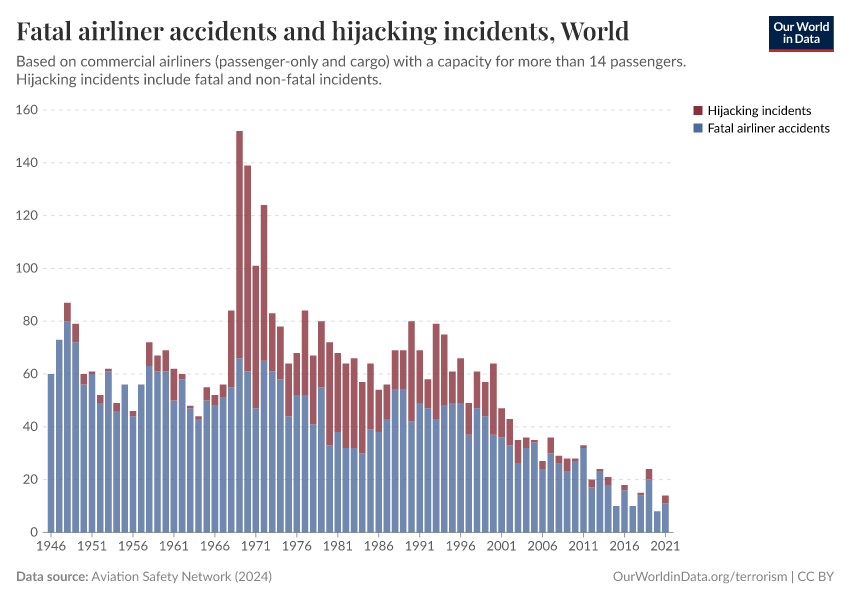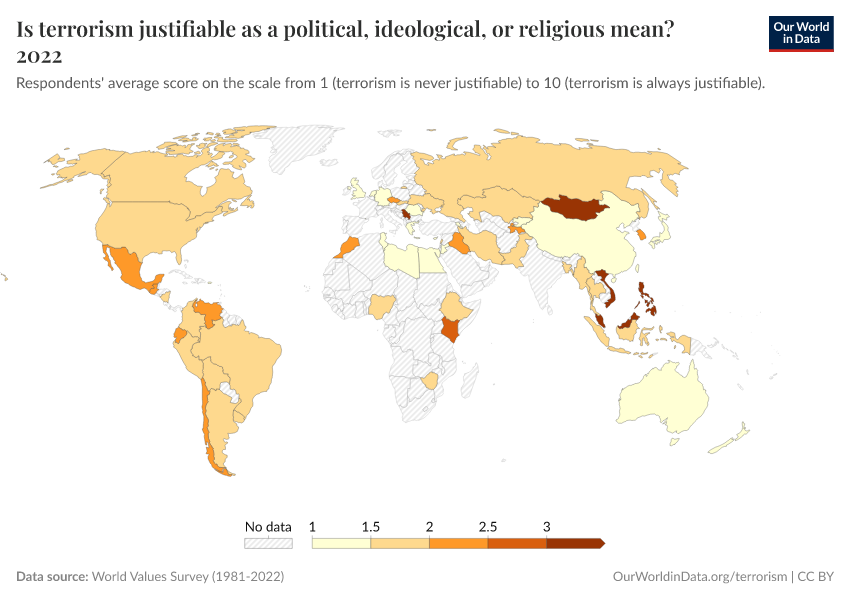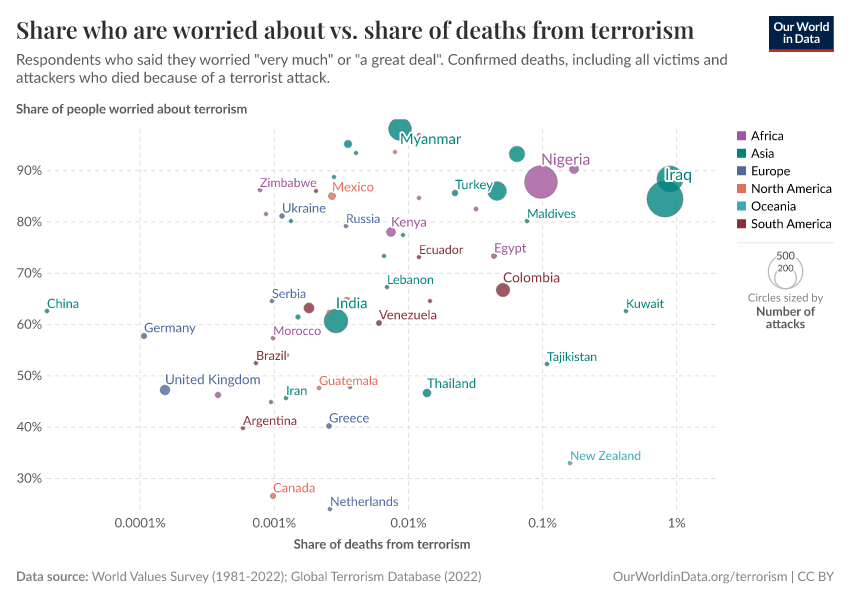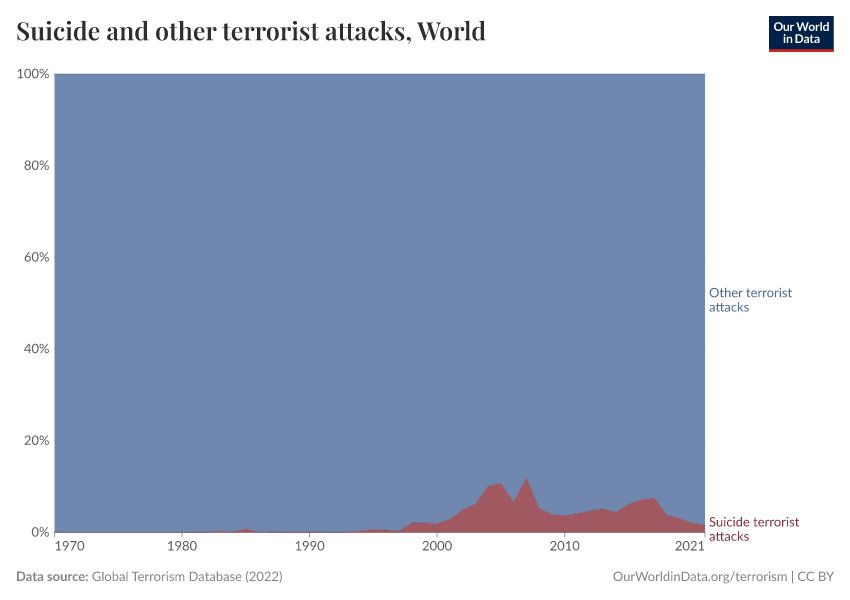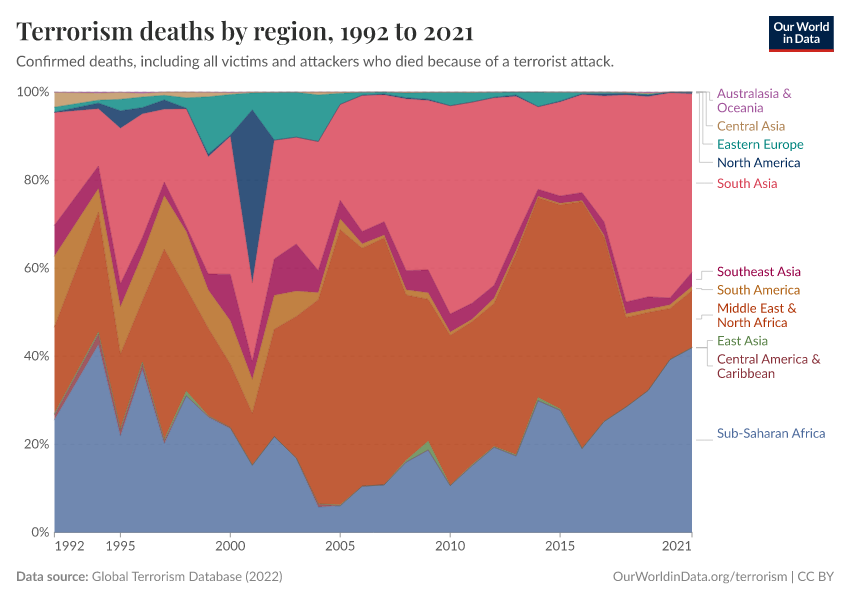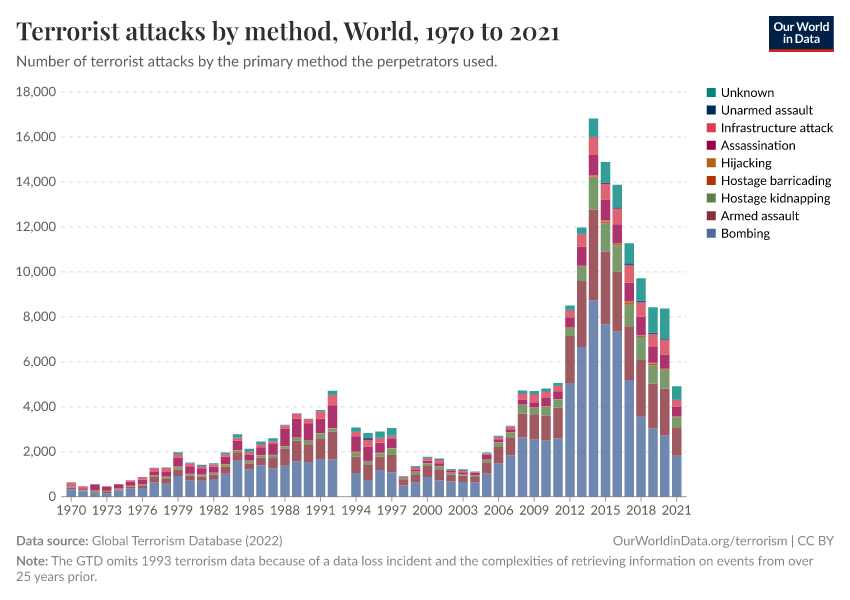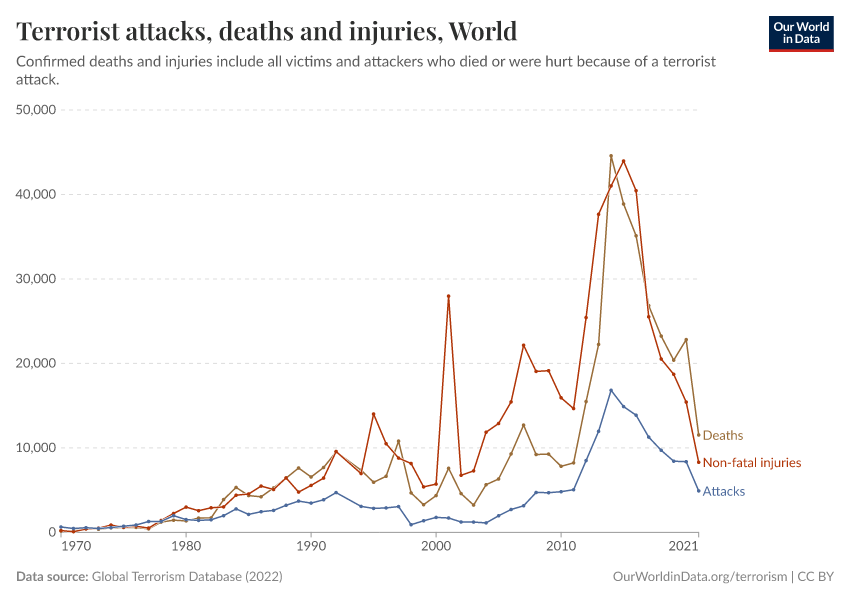Terrorism
How common is terrorism? How does this differ across countries? And how is it changing over time? Explore research and data on terrorism.
Terrorism is the threat or use of violence to intimidate or coerce in the pursuit of political or ideological goals. It is usually understood to be done by non-state actors — individuals or organizations not part of the government.
Terrorism can take many forms, including bombings, armed assaults, hijackings, or hostage-taking. Its targets can also vary and can be aimed at civilians, state actors, or public infrastructure.
Globally, terrorist attacks and deaths are rare. But this varies a lot worldwide: in some countries, they are common and on the rise, while in others, there are few attacks or none.
Terrorism is also a big concern for people across the world. Attacks are rare, but often shocking, as they are meant to scare and subdue.
This page provides data and research on how common terrorism is, how it differs across countries, and whether it is becoming more or less frequent over time.
Research & Writing
August 16, 2023
The Global Terrorism Database: how do researchers measure terrorism?
There are different approaches to measuring terrorism. Here is the approach of the Global Terrorism Database, a leading source of terrorism data.
December 07, 2021
Causes of death globally: what do people die from?
To make progress towards a healthier world we need to have a good understanding of what health problems we face today.
Key Charts on Terrorism
See all charts on this topicAcknowledgements
We thank Cam Appel for his contributions to previous versions of this topic page.
Endnotes
Armed conflicts can include terrorist attacks, but they do not necessarily seek to coerce and intimidate or targets civilians.
Homicides differ from terrorism because they are not committed in the pursuit of political or ideological goals.
START (National Consortium for the Study of Terrorism and Responses to Terrorism). 2021. Global Terrorism Database (GTD) [Data set]. University of Maryland.
Importantly, this includes bystanders who were not the intended target. So, an attack targeting members of the military may still kill more civilians who happened to be nearby.
Inglehart, R., C. Haerpfer, A. Moreno, C. Welzel, K. Kizilova, J. Diez-Medrano, M. Lagos, P. Norris, E. Ponarin & B. Puranen (eds.). 2022. World Values Survey: All Rounds - Country-Pooled Datafile. Madrid, Spain & Vienna, Austria: JD Systems Institute & WVSA Secretariat. Dataset Version 3.0.0. doi:10.14281/18241.17
Cite this work
Our articles and data visualizations rely on work from many different people and organizations. When citing this topic page, please also cite the underlying data sources. This topic page can be cited as:
Bastian Herre, Veronika Samborska, Hannah Ritchie, and Max Roser (2023) - “Terrorism” Published online at OurWorldinData.org. Retrieved from: 'https://ourworldindata.org/terrorism' [Online Resource]BibTeX citation
@article{owid-terrorism,
author = {Bastian Herre and Veronika Samborska and Hannah Ritchie and Max Roser},
title = {Terrorism},
journal = {Our World in Data},
year = {2023},
note = {https://ourworldindata.org/terrorism}
}Reuse this work freely
All visualizations, data, and code produced by Our World in Data are completely open access under the Creative Commons BY license. You have the permission to use, distribute, and reproduce these in any medium, provided the source and authors are credited.
The data produced by third parties and made available by Our World in Data is subject to the license terms from the original third-party authors. We will always indicate the original source of the data in our documentation, so you should always check the license of any such third-party data before use and redistribution.
All of our charts can be embedded in any site.




